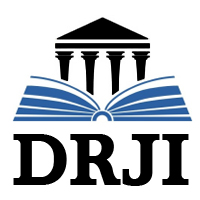Analyze code through C++ and Code::Blocks programming languages
Abstract
This article deals with the analysis to be carried out of a code using nested data structures, which are grouped into integer, char, and floating data, characterizing their organization and the relationships between the data that constitute it. To develop a program applying constant values that refer to already permanent data and integer type variables as well as counters to obtain accumulated values and total sum of trips, such as drawers for n companies, which distribute the products already specified in the program with to obtain the greatest sale and ordering, such as its search through an auto-generated code, we have taken an execution time in the program for which the C++ and Code: Blocks programming language will be used, since it is a flexible language that works with the structured programming with the possibility of defining source code files, and for the proper execution of the program it is done in Dev c++ and Code: Blocks. In addition to the use of structures, functions with parameters are also used and in turn by value, by reference that return values within the code. Modular programming is made up of specific tasks that are declared independently, and these in turn seek to be solved in parts, this is about dividing the program into sub-programs that allow the reduction of the code for a better understanding and in this way it can be applied in any development IDE such as Code: Blocks.Code
Downloads
References
(1) Pascal, «Estructura de Datos,» 2011, (En línea). Available: https://www.programarya.com/Cursos/C++/Estructuras-de-Datos.
(2) Oracle, «Lenguaje de Programacion,» 16 03 2015. (En línea). Available: https://aprendiendoarduino.wordpress.com/2015/03/26/lenguaje-de-programacion-c/.
(3) E. Pascal, «Documento Programacion Modular,» 2008. (En línea). Available: http://teleformacion.edu.aytolacoruna.es/PASCAL/document/modular.htm .
(4) Anonimo, «Funciones con Parametros,» 13 08 2013. (En línea). Available: https://www.tutorialesprogramacionya.com/cya/detalleconcepto.php?punto=17&codigo=17&inicio=15.
(5) F. B. y. R. Ferris, «Introduccion a Ficheros,» 2009. (En línea). Available: file:///C:/Users/Ficheros/Documents/AED.Tema.07.pdf.
(6) Anonimo, «Librerias estaticas,» 2011. (En línea). Available: http://www.programacionenc.net/index.php?option=com_content&view=article&id=63:creacion-y-uso-de-una-libreria-estatica-h&catid=37:programacion-cc&Itemid=55.
(7) D. Maldonado, «¿Que son los IDE de desarrollo?,» 2012, 24 10. (En línea). Available: https://www.ecured.cu/IDE_de_Programaci%C3%B3n.
(8) E. Perdono, «IDEde desarrollo: Dev C++,» 27 08 2009. (En línea). Available: https://eperdomo89.wordpress.com/2009/08/27/dev-c-%C2%BF-que-es/.
(9) Anonimo, «Tipos Simples y estructuras de Control,» (En línea). Available: http://di002.edv.uniovi.es/~dani/asignaturas/apuntes-leccion4.PDF. (Último acceso: 13 07 2018).
Copyright (c) 2019 Ciencias de la Ingeniería y Aplicadas

This work is licensed under a Creative Commons Attribution-NonCommercial-NoDerivatives 4.0 International License.
The authors who publish in this journal agree to the following terms:
- Creative Commons Attribution-NonCommercial-NoDerivatives License allows others to share the work with acknowledgment of authorship of the work and initial publication in this journal.
- Authors may separately establish additional agreements for the non-exclusive distribution of the version of the work published in the journal (for example, placing it in an institutional repository or publishing it in a book), with an acknowledgment of its initial publication in this journal.
- Authors are permitted and encouraged to disseminate their work electronically (for example, in institutional repositories or on their own website) before and during the submission process, as it can lead to productive exchanges, as well as further citation. earliest and largest of published works (See The Effect of Open Access) (in English).









